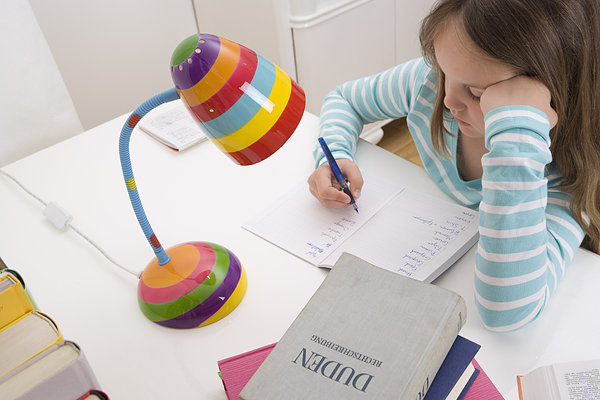The color temperature of the lamp may affect the child's academic performance.
The color temperature of the lamp may affect the child's academic performance.
Release date: 2017-09-21 Source: CNLED network
Artificial lighting has had a series of effects on people's mood and attention, especially the influence of the color temperature of the light on human cognition. Kyungah Choi and Hyeon-Jeong Suk, associate professors of the Department of Industrial Design and the head of the Color Lab at the Korea Institute of Science and Technology (KAIST), published their research in the journal Optics Express.

In their research, Choi and Suk specialize in the effects of different correlated color temperatures (CCTs). CCT is a simple way to describe the color appearance of a light source . A low CCT below 3500 Kelvin (K) appears as "warm" (yellow-white) light, while a high CCT (over 5000K) appears as "cold" (blue-white) light.
Suk explained: "The incandescent bulb emits light with a color temperature between 2500K and 3000K, which is yellow-white; the daylight color temperature is about 6500K, which is blue-white. Fluorescent lamp color temperature range is from 2500 K to 5000 K, but it is not adjustable. The distinguishing feature of LEDs is their ability to control their color temperature, which is an incomparable advantage of traditional lamps ."
Suk and Choi conducted a preliminary study to explore the effects of different color temperature lighting conditions (3500, 5000, and 6500K) on physiological alertness, conducted by adult volunteers in an experimental setting. The investigators measured and placed an electrocardiogram (ECG) on electrodes placed on volunteer wrists and ankles, which reflected the subject's alertness.
The experiment was carried out in a room equipped with an LED- illuminated ceiling, and the CCT of the ambient lighting was controlled by adjusting the light levels of red, green, blue and white. As predicted, the 6500K lighting conditions resulted in the highest level of physiological alertness, while the 3500K condition was the most "relaxed."
Next, the researchers simulated a classroom in the same laboratory to test the impact of three different lighting conditions on academic performance and inter-school activities for fourth-grade children. In order to test the impact on academic performance, students were given a timed arithmetic test. Curiously, Choi and Suk did not notice significant changes under various conditions. In other words, the “irritating†6500 K light did not help students achieve better test scores. The reason why the experimental results are not as expected, Suk explained may be because "the test object is in the artificial environment, and the experiment takes a short time."
To verify that long-term lighting conditions produce different results, Suk and Choi studied two other fourth-grade students in real-life classrooms: a classroom with LED lights that can be adjusted to 3500 K, 5000 K and 6500K; another classroom uses standard fluorescent lamps as a control. This time, as expected, students achieved the best results in their academic tests when they were studying under 6500K lighting conditions. Under the 3500K lighting, the inter-class activities performed best.
The results of the study showed that the 6500K condition led to a higher alertness and increased academic performance. This also follows the prediction of the so-called "Yelke Dodson's Law". This rule was proposed more than a century ago by psychologists Robert Yerkes and John Dodson. The law assumes a curvilinear relationship between psychological arousal (or stress) and performance. That is to say, at a certain level of spiritual awakening (in this experiment, referring to 6500K lighting conditions), people tend to perform best. When they are above or below this certain level, people's performance is not so good. All right.
This suggests that there will be an optimal value that will lead to the best academic performance, and the effect will be diminished beyond this optimal value. The duration of exposure to light also affects performance. “Future work can be devoted to investigating the ideal exposure time for each lighting condition,†Suk said.
At the end of the study, the research team demonstrated a dynamic lighting system based on mobile applications. The intelligent learning environment has three preset conditions: “simpleâ€, “standard†and “difficultâ€. In addition, Choi is developing an integrated vision system that adapts lighting conditions to adjust the CCT of visual display terminals such as e-books and smart cards to optimize the impact on learning and performance.
“We believe that small changes in the classroom environment, such as lighting conditions, can have a huge impact on the learning of students,†Suk said.
Please reprint the original source: https://
Tags: artificial lighting, incandescent, LED, LED lights, lamps, lighting
Commutators For Household Machines
Commutators For Household Machines,Commutator For Washing Machines Motor,Commutator For Air Conditioning Motors,Commutator For Water Purifier Motor
ZHEJIANG JIAGU ELECTRIC APPLIANCES CO. LTD , https://www.chinajiagu.com



